It really is unfair that one country can have Rome, Venice, and Florence. It is no wonder that Italy is the primo tourist destination of the World.
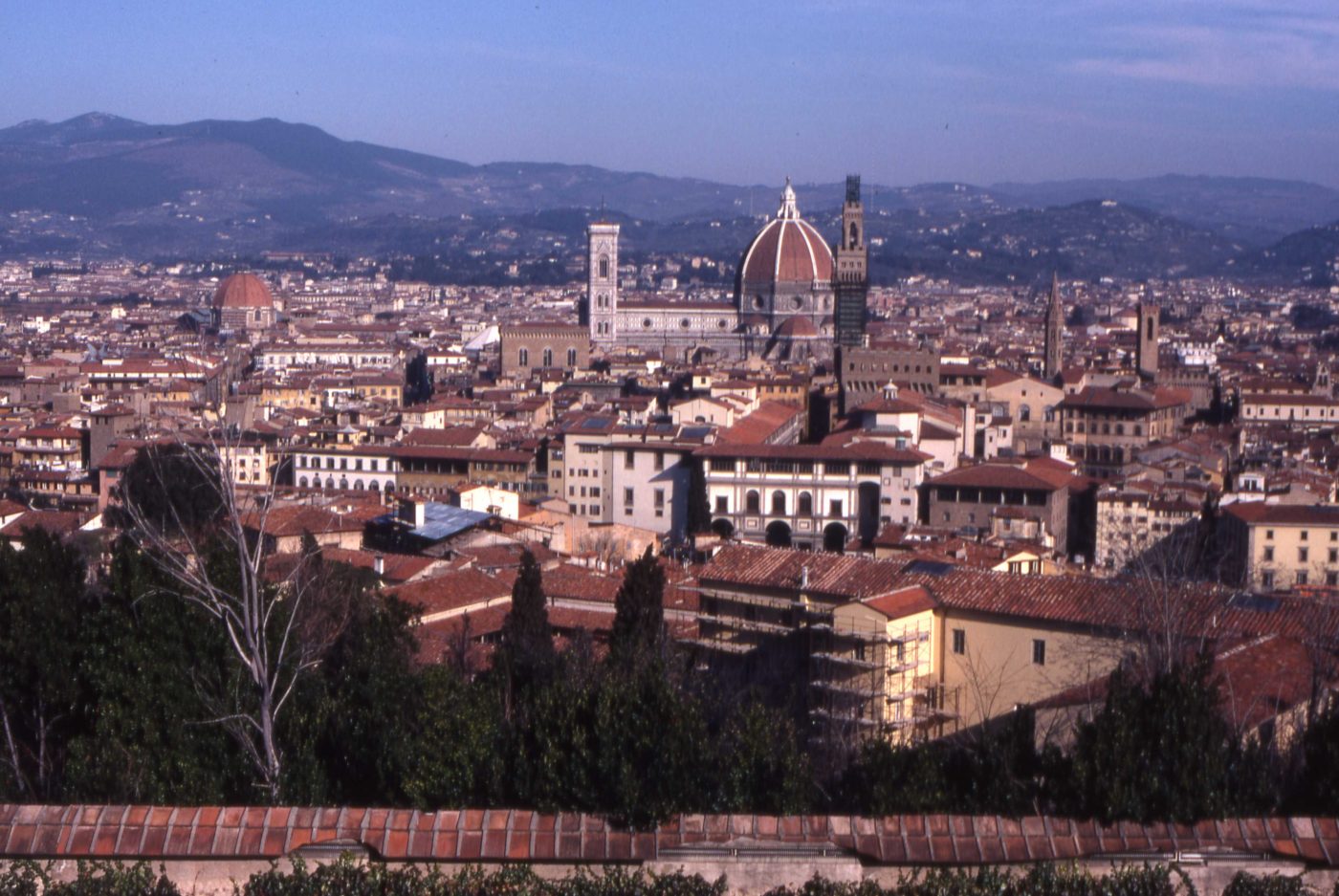
If you look for Florence on a map of Italy, or you try to buy a train ticket there, you might think it does not exist. You will find a Tuscan capital called Firenze that is just about where you think Florence should be. You are not the first to be flustered by this. Buy the ticket to Firenze.
You are coming to Florence to see some of the most famous art in the world. The first question is, “Why is it here?” As discussed in the essays on Rome, the principle reasons for any blossoming of the arts generally boil down to wealth, power, and egos. As it turns out, Florence had all three in abundance at a significant time in philosophic history.
Florence was founded on one of the two major north-south highways of Italy. So it had great traffic. That helped its markets grow, particularly the wool trade. Its valley location allowed it to spread out more than the neighboring hill towns of Tuscany. So, it became the population center of the region. As with most of Italy, its local politics were oriented to family loyalties. The wealthier families, Albizzi, Strozzi, and Medici, ran the place, with all the attendant jealousies and rivalries. Pick up Florence: The Golden Age 1138-1737.
In the early 15th Century, a fellow named Giovanni di Bicci de’ Medici started a bank that ultimately spread through most of the town centers of Tuscany. Business was great and their connection to the Papacy was very strong. The fortune grew and the Medici financial empire rapidly expanded. They would become some of the most important art patrons of the age. There are lots of books on the Medici: The House of Medici: Its Rise and Fall, or the more recent The Medici: Power, Money, and Ambition in the Italian Renaissance
.

The philosophic shift that was happening at this time was a revival of classical Greek thinking and science, combined with a healthy interest in the capabilities of Man. It is called the Renaissance, which means rebirth. To understand the Renaissance and its expression by the remarkable set of artists in Florence at this time, find an out-of-print book called The Italian Painters of the Renaissance: With 400 Illustrations by Bernard Berenson. His essay of Florentine painters, written in 1896, is masterful, still relevant, and will provide an eloquent context for your visit. With Berenson in one hand and a great guidebook of Florence in the other, like Rick Steves Florence & Tuscany (Rick Steves Travel Guide)
, you will find the churches and museums that have the important works. Alternatively, see Art of Renaissance Florence, 1400-1600 (Chairman’s Circle Books)
.
Here is Berenson’s description of the philosophical phenomenon of the Renaissance:
“The medieval skies had been torn asunder and a new heaven and a new earth had appeared, which the abler spirits were already inhabiting and enjoying. Here new interests and new values prevailed. The thing of sovereign price was the power to subdue and to create; of sovereign interest all that helped man know the world he was living in and his power over it. To the artist the change offered a field of the freest activity. It is always his business to reveal to an age its ideals… In the Renaissance… the figure artist had a demand made on him such as had not been made since the great Greek days, to reveal a generation believing in man’s power to subdue and possess the world, the physical types best suited for the task.”
The Renaissance was all about Man and his unbounded possibilities. In Florentine painting and sculpture, the focus was on the sublimity of the human figure. The huge transition was from unimpressive, two-dimensional figures to realistic figures creating, in Berenson’s phrase, “three dimensions out of two and inspiring the tactile sense.” In other words, the images looked so real you would think you could reach out and touch them.
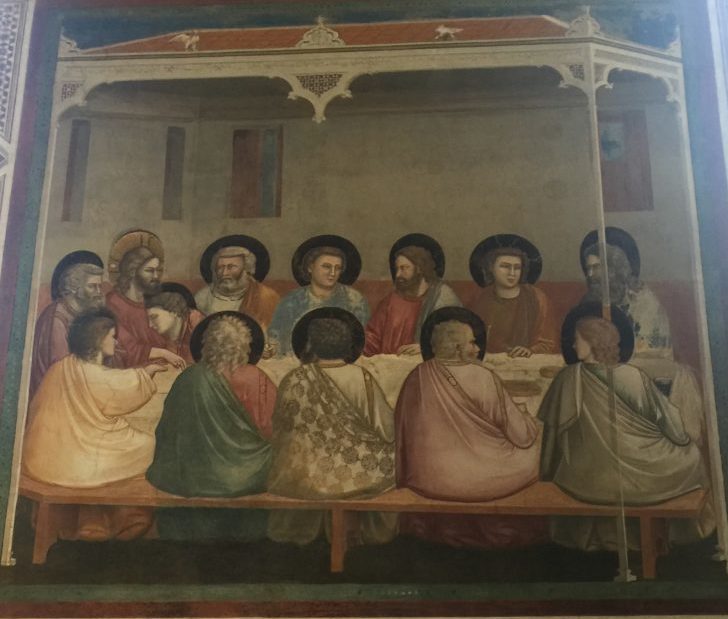
Borrowing heavily from Berenson’s essay, the procession of this Florentine evolution of expression ranged from Giotto, (late 13th Century) to Michelangelo, (mid-16th Century). Medieval art prior to Giotto was little more than gilded illustrations of religious themes. Giotto’s innovations were to create faces that were much more realistic in features and skin tones. Though his figures are still pretty stiff, they have some of the first attempts at a three dimensional perspective. (Giotto Di Bondone: 1267-1337 (Taschen Basic Art))
To appreciate the breakthrough created by Giotto, it is necessary to visit the Scrovegni Chapel in Padua. His biblical murals come alive in a way that you can immediately appreciate. His benefactor, Enrico degli Scrovegni, wanted something different. He got it! The art of biblical story telling has never been the same.
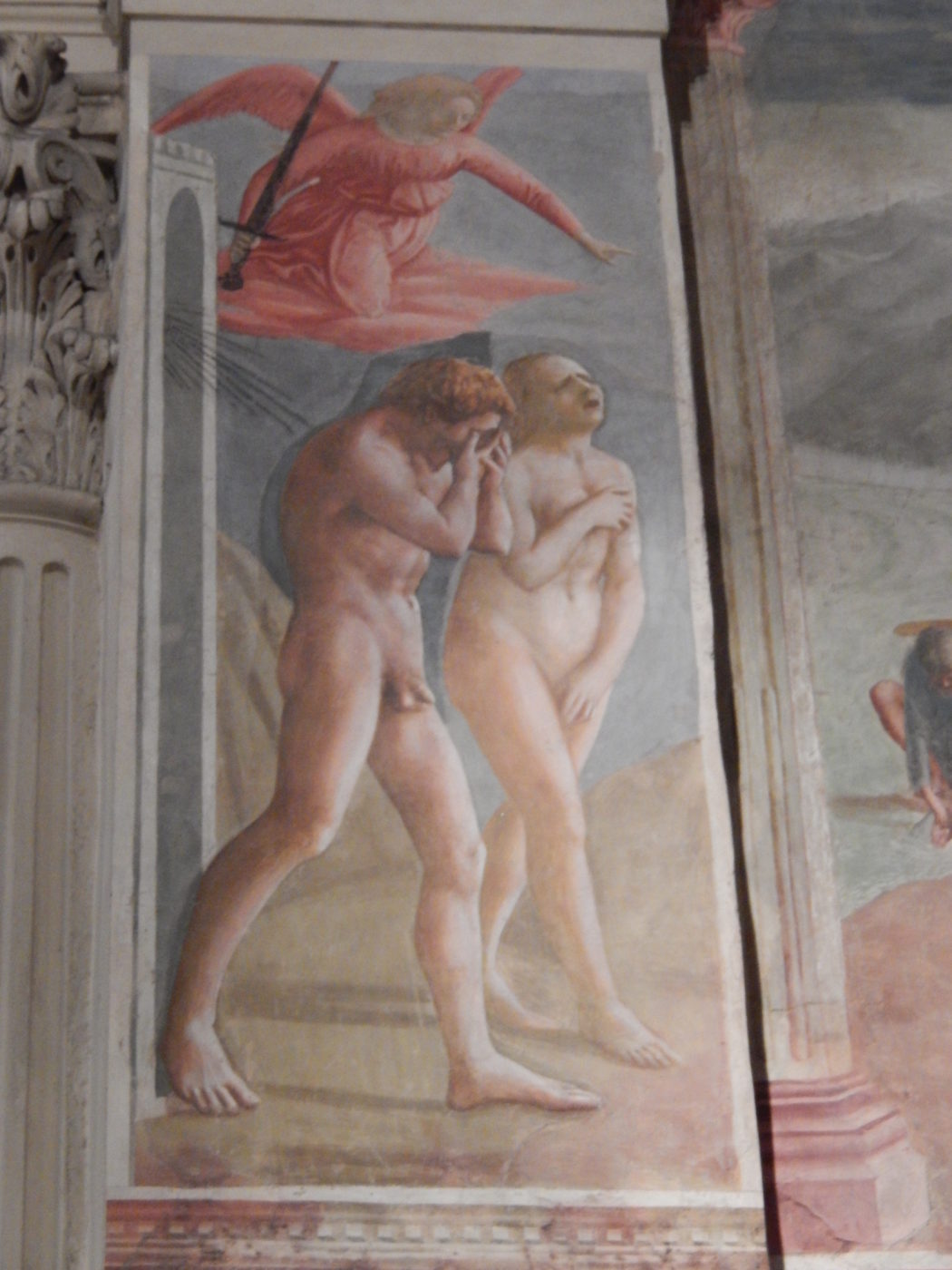
Another huge breakthrough came in the 15th Century with Masaccio. The masterpiece most often cited is his mural of the “Expulsion from Eden” in the Brancacci Chapel in Santa Maria del Carmine in Florence. It’s a bit of a hike across the Ponte Vecchio on the West side of the Arno. However, for those with the interest, this is one of the most important murals in art history.
There are two reasons. First, the full length nude figures are drawn with a realistic manner, incorporating a natural sense of body image and motion in three dimensions. Second, the characters of Adam and Eve are clearly displaying serious emotion. Both of these aspects of the artistic expression were innovations. By today’s standards they look rough. But compared to the Medieval art of the previous several centuries, they were a massive change. See Masaccio and the Brancacci Chapel (The Library of Great Masters).
Masaccio’s other major innovation is the advance he made in depicting three dimensional perspective. Here, the masterpiece is the “Holy Trinity”, another wall mural, in the Basilica of Santa Maria Novella, right next to the Florence train station. The painting is all about the “trick” of depicting three-dimensional architecture. There are several layers of depth to the image, from the cove with the Trinity, (God standing behind the Crucifixion), the false columns, the patrons kneeling in front of the columns, and the sarcophagus down in front. It was the most extensive and convincing expression of perspective in its day.
Of the hundreds of other artists swarming the Florentine studios after Masaccio, four names stand out whose work built on the innovations of Giotto and Masaccio and advanced the techniques for painting perspective and natural realism. Fra Angelico, a Dominican friar, focused on religious portraits and the emotional expressions of his subjects, which were generally gloriously happy, devout Christians. Uccello experimented with perspective almost like a photographer toys with camera angle. Verrocchio fine-tuned the techniques of lighting and shading. Pollaiuolo concentrated on depicting the movement of characters. All contributed to the evolution of these skills.

From the studios and on the figurative shoulders of these lesser names came the giants of the age, da Vinci, Botticelli, and Michelangelo. They probably could not have reached their level of achievement without the work of their predecessors. However, with their own particular talents, they each achieved what their predecessors could never have accomplished.
Leonardo da Vinci, the ultimate Renaissance Man, was the virtuoso of realistic expression. Where some artists were able to faithfully reproduce realistic “facts”, Leonardo made the significant real. As Berenson laments, the only criticism you could level at da Vinci as an artist is that he did not do many paintings. It is amazing that virtually every da Vinci painting we know about is a stunning masterpiece, and painting wasn’t even his primary interest. Oh! To be young and talented…
You will find da Vinci’s “Annunciation” and the “Adoration of the Magi” in the Uffizi Gallery. If your Italian touring plans make it possible to swing through Milan, “The Last Supper” is worth the detour. See it before it fades away. Walter Isaacson’s best seller, Leonardo da Vinci or the comprehensive Leonardo Da Vinci: The Complete Paintings and Drawings
.
For Sandro Botticelli, the innovations were with line and movement. His style is very distinctive and you can identify his work when it is surrounded by others, as in the Sistine Chapel in Rome. There is a lightness of feeling and a beauty of imagery that have made his major works perennial favorites. You will find the “Birth of Venus” (or Aphrodite) and “Primavera” (which means Spring), in the Uffizi, along with several other works. The Accademia and the Pitti Palace also have works by Botticelli. (Botticelli)
Finally, we come to sculptor and painter extraordinaire, Michelangelo. If the Florentine Renaissance is about the glorification of the human figure, the work of Michelangelo is the culmination of all who came before him. More than any previous artist, he felt the perfect nude human figure was the most beautiful expression of the wonder of Man.
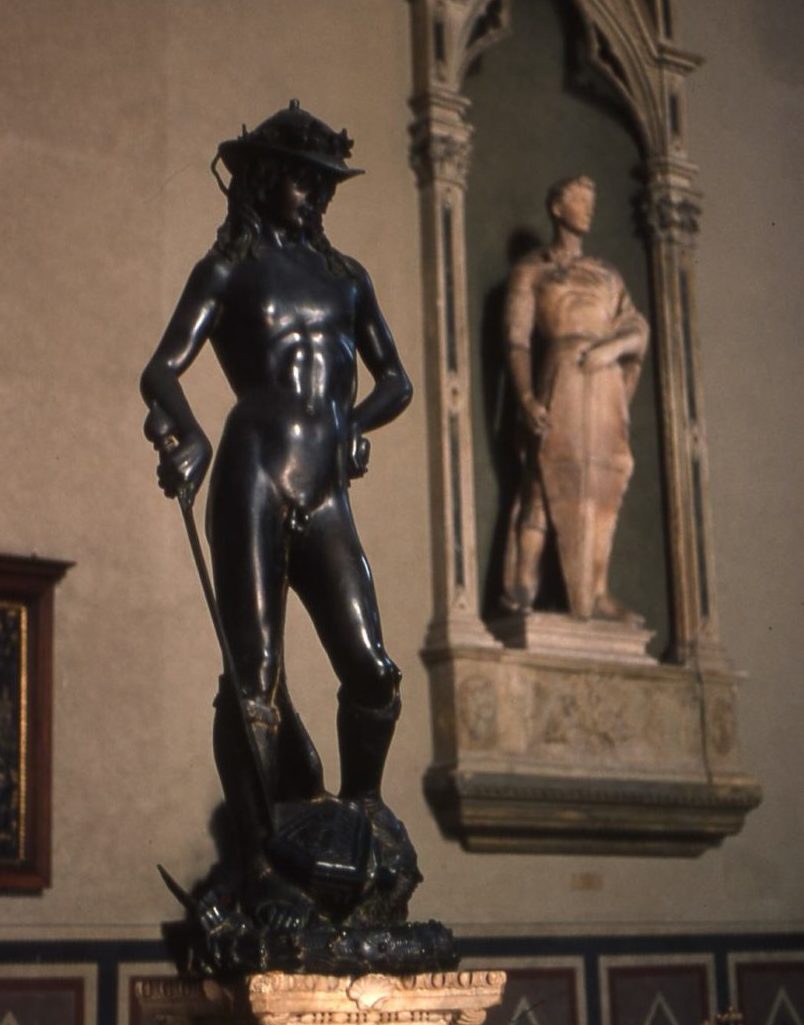
His most glorious frescos are, of course, in the Sistine Chapel in Rome. Michelangelo and the Pope’s Ceiling and the famous historical novel by Irving Stone, The Agony and the Ecstasy: A Biographical Novel of Michelangelo
However, his most famous sculptures are in Florence. “David” is at the Accademia along with a collection of “slaves”. “Bacchus” is at the Bargello, alongside the famous Donatello version of “David”. The “Florentine Pieta” is in the Museo dell’Opera del Duomo. The “Genius of Victory” is in the Palazzo Vecchio. The incredible Medici tombs are in the Basilica di San Lorenzo. The only major painting in Florence is the Doni Tondo, “The Holy Family” in the Uffizi. See Michelangelo (GO)
.
We can’t leave Florence without mentioning some other Renaissance titans. One of the most iconic features of the Florentine skyline is the spectacular cathedral, Santa Maria del Fiore, or the “Duomo” (Dome). If your previous experience with cathedrals is northern Europe, (Winchester, Notre Dame, Chartres), you are in for a surprise. Instead of grayish stone, you will find a stunning structure of white and colored marble, covered with a tile roof of Mediterranean orange. It is crowned by a tall dome that was an architectural wonder. The architect was Filippo Brunelleschi, and the creation of the dome required a number of innovations due to its size and octagonal design. Here’s the story, Brunelleschi’s Dome: How a Renaissance Genius Reinvented Architecture.

The Baptistry building in front of the Duomo is famous for its engraved door panels. The East doors depict ten scenes from the Old Testament and the North doors have twenty eight scenes of the New Testament and the lives of the evangelists and saints. These were all done by Lorenzo Ghiberti, who won the commission in a competition. His winning entry is in the Bargello Museum.
The scenes are mostly recognizable and it is a good test of your own biblical knowledge to see how many you can identify. (See the photo above) The Old Testament East doors were referred to as the “Gates of Paradise” by Michelangelo. You are looking at replicas. The original bronze panels are in the Museo dell’Opera del Duomo. A beautiful art book treatment of Ghiberti’s work is The Gates of Paradise: Lorenzo Ghiberti’s Renaissance Masterpiece (High Museum of Art Series).
One of the central themes of the Christian Dogma is that whatever you do in this life will determine your reception into the next life. The choices range from the glories of salvation in Paradise to the eternal trials of damnation in Hell. Aside from centuries of teachings from popes and priests, one of the most influential depictions of the afterlife ever written is the Divine Comedy, by Dante Alighieri.
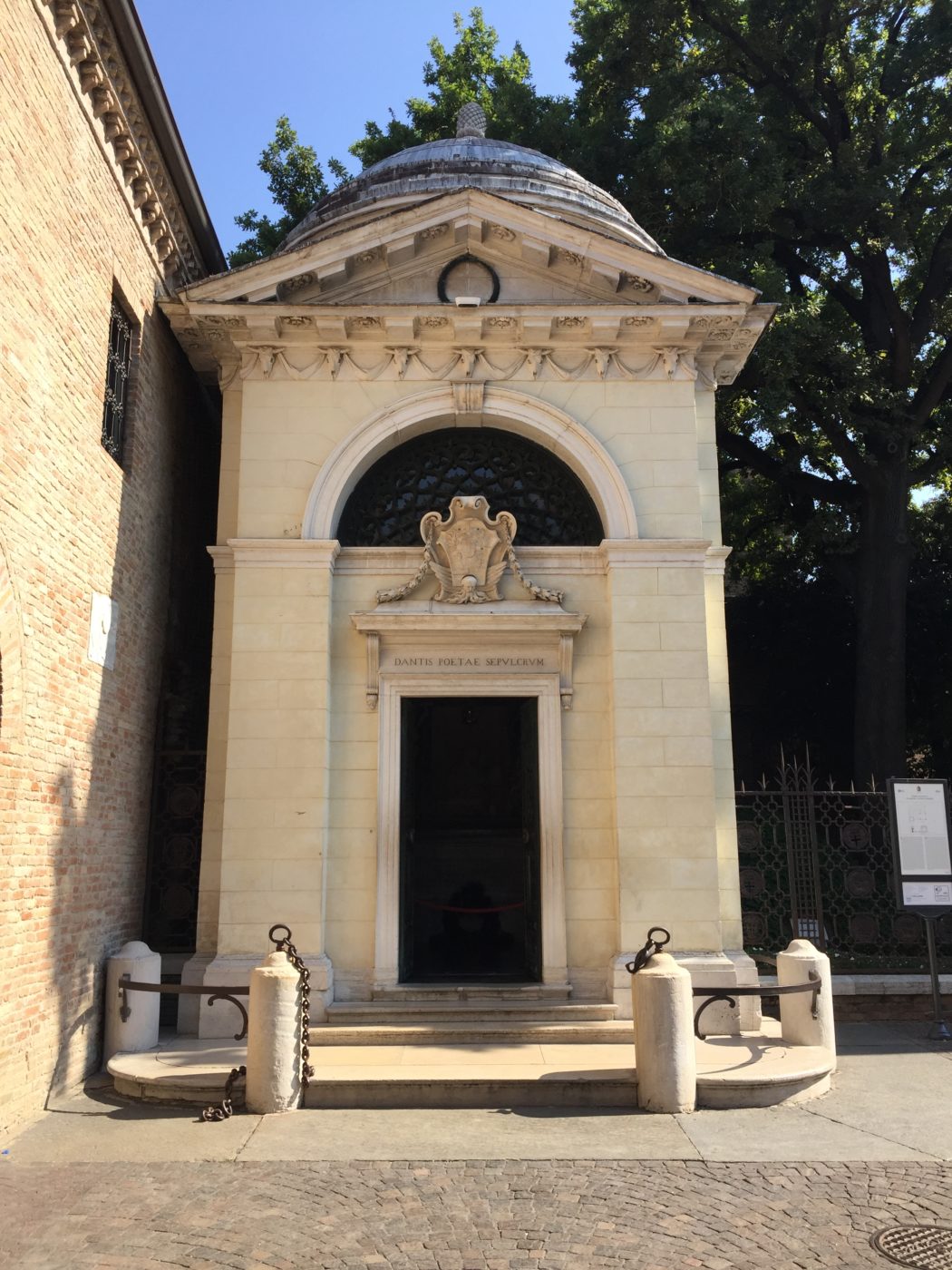
After losing the true love of his life, (as opposed to his wife), and being exiled from Florence in turbulent political times, he sequestered himself in Ravenna, where he is buried, and wrote his masterpiece. It is full of political satire, invective, creative imagery, imaginative philosophy, and strict Catholic doctrine. Make sure you read an annotated version or you’ll miss much of the meaning.
Speaking of politics, the name Niccolo Machiavelli brings to mind ruthless strategies for managing cities and countries. In The Prince, he discusses methods by which a new ruler assumes control of his dominion. This was a relevant discussion when it was written in 1513, because so much of Europe had tromped through Italy in the wake of the 1495 Battle of Fornovo, that new conquering princes were a frequent occurrence. Machiavelli’s refrain of the “ends justify the means” provides license for brute force, treachery, and many other alternative strategies, in the event that “just rule” doesn’t work. Again, an annotated version is a must.
The art and atmosphere of Florence is magical. However, you may need a Brink’s truckload to pay for lunch in front of the Palazzo Vecchio. Everything you want to see is with two square miles. So, bring comfortable shoes, make reservations for all the museums and take it all in.






